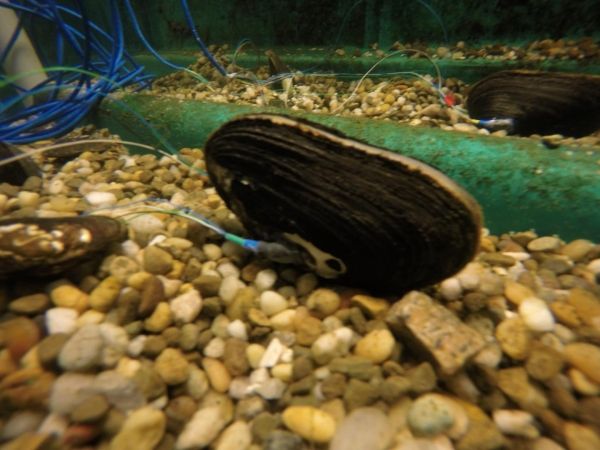Researchers at North Carolina State University have designed and demonstrated a new system that allows them to remotely monitor the behavior of freshwater mussels. The system could be used to alert researchers to the presence of toxic substances in aquatic ecosystems.
“When mussels feed, they open their shells; but if there’s something noxious in the water, they may immediately close their shells, all at once,” says Jay Levine, co-author of a paper on the work and a professor of epidemiology at NC State. “Folks have been trying to find ways to measure how widely mussels or oysters open their shells off and on since the 1950s, but there have been a wide variety of challenges. We needed something that allows the animals to move, can be placed in streams and collects data – and now we have it.”
“We’ve basically designed a custom Fitbit to track the activities of mussels,” says Alper Bozkurt, corresponding author of the paper and a professor of electrical and computer engineering at NC State.
Read More: North Carolina State University
Researchers at North Carolina State University have designed and demonstrated a new system that allows them to remotely monitor the behavior of freshwater mussels. A prototype of the system is shown here. The system could be used to alert researchers to the presence of toxic substances in aquatic ecosystems. (Photo Credit: James Reynolds, NC State University)


